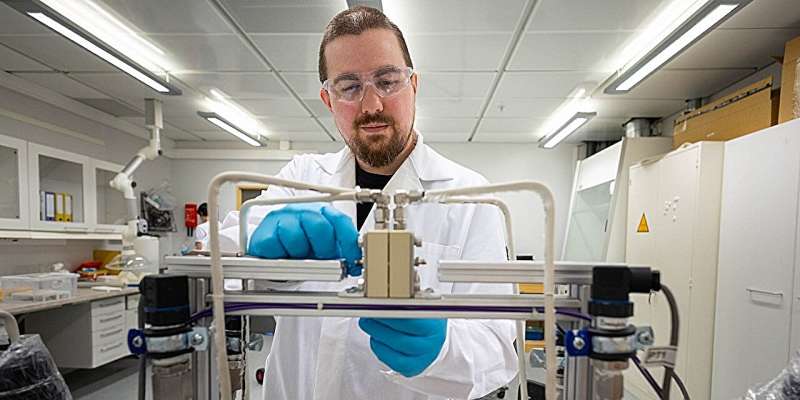
Norway wastes huge amounts of energy. Surplus heat produced by industry is hardly exploited at all.
Researchers at NTNU have been looking at the possibilities for doing something about this.
"Surplus heat from industrial processes is a huge resource," says Kim Kristiansen. He has just completed his Ph.D. on a technology that can harness some of the surplus heat that currently goes to waste.
Almost all the heat generated by industrial processes is currently released directly into the air or the ocean, and we are not talking about small amounts. In Norway alone, industry produces around 20 TWh of waste heat each year.
That number might not mean much to you, but according to the Norwegian Water Resources and Energy Directorate (NVE), this amount of energy corresponds to half of the electricity consumption of all Norwegian households combined. In other words, approximately the entire heating demand.
Kristiansen is part of the thermodynamics research group at PoreLab in the Department of Chemistry. Academic supervisor Signe Kjelstrup and research group manager Øivind Wilhelmsen are co-authors of the article now published in the journal Desalination.
Drinking water as an added bonus
The technology also has another effect that may not be as relevant in Norway, but which might be a game changer in countries with limited drinking water.
"The technology doesn't just recycle the waste heat energy, it can also purify the waste water produced by industry," says Kristiansen.
In many parts of the world, drinking water is becoming an increasingly scarce resource.
"According to UNICEF, 4 billion people are already experiencing severe drinking water shortages for at least one month of the year, and there is a high demand for technology that can meet these challenges," says Kristiansen.
A lack of drinking water is therefore a problem for approximately half of the world's 8 billion people.
Producing clean water
So what is this new technology?
"The waste water produced by industry is often contaminated. If we evaporate this impure water through small pores in a water-repellent membrane, the condensed water that emerges on the other side is drinkable," says Kristiansen.
This method is best suited for purifying water with so-called non-volatile impurities, such as salt. This is in contrast to alcohols and a number of other organic substances that can evaporate along with the water through the membrane.
"The most important area of application for this technology is therefore desalination of seawater. The treatment of process water is not being ruled out, but it involves additional challenges depending on its content," says Kristiansen.
So the technology can produce drinking water, but what about exploiting the waste energy?
Exploiting temperature differences to pump up water
When water is heated on one side of the membrane, it evaporates and releases heat on the other side through condensation. A pressure difference may then arise between the two sides of the membrane.
"The temperature difference is used to pump the water up, and the pressure difference represents mechanical energy that can be used to power a turbine," says Kristiansen. The phenomenon is called thermal osmosis.
Seemingly simple, but ingenious.
"We have investigated the interactions between water and the pores in the membrane, and what happens when the water evaporates, is transported through the pores, and condenses," says Kristiansen about the doctoral research.
He has designed theories on membrane properties and the effect they have on the entire process. He has also systematically measured this effect in the laboratory.
"The conclusion is that the technology has great potential. Through modification of the membranes, we can help address both the increasing challenges associated with energy efficiency requirements and the lack of clean drinking water," says Kristiansen.
More information: Kim R. Kristiansen et al, Thermo-osmotic coefficients in membrane distillation: Experiments and theory for three types of membranes, Desalination (2024). DOI: 10.1016/j.desal.2024.117785
Citation: Researchers suggest smart solution to harness waste heat from industry (2024, June 27) retrieved 27 June 2024 from https://techxplore.com/news/2024-06-smart-solution-harness-industry.html
This document is subject to copyright. Apart from any fair dealing for the purpose of private study or research, no part may be reproduced without the written permission. The content is provided for information purposes only.
